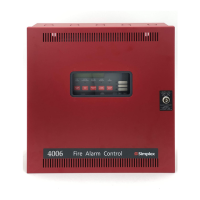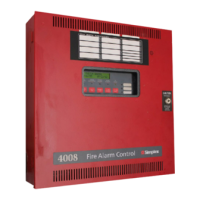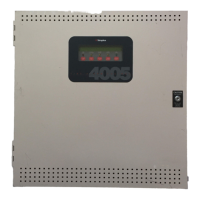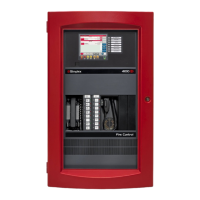5-4
Chapter 5 The System Power Supply (SPS)
SPS Configuration
Overview This section contains information about SPS jumpers and DIP switches. Refer to Chapter 4 of
this document for information on setting the jumpers.
Jumper Settings P1: Earth connect jumper. Note that the P1 location is clearly designated on the PCB silk
screen.
• Position 1 – 2: Enables Earth fault monitoring.
• Position 2 – 3: Disables Earth fault monitoring.
Only one power module should be set for earth fault monitoring for each location within a
system. Normally, the SPS in the CPU bay is set to monitor for earth faults. If there is a second
SPS connected to the same set of batteries, that SPS should have earth fault monitoring
disabled. Other power modules that can be set to monitor earth fault conditions are TPS, RPS
and XBC. When located under common 0V with a TPS, the TPS should be set to monitor
earth faults, and other co-located power modules should be set to disable earth fault
monitoring.
P2: If the SPS IDNet outputs are being used, you may change P2 to configure the IDNet shield
connection. Note that the P2 pin 1 location is towards P3.
• Position 1 – 2: Connects the shield to 0 V (default).
• Position 2 – 3: Connects the shield to earth ground.
P3: City Card and Relay Card operation. Note that the P3 pin 1 location is towards P2.
• Position 1-2: Install in position 1-2 only if a relay card 4100-6033 is installed and has relay
3 programmed for operation other than "Trouble"
• Position 2-3: (default) For City Card operation and for use with 4100-6033 if relay 3 is
programmed for "activate on trouble" operation
Setting the Device
Address
Refer to Appendix A to set the device address for the SPS with DIP switch SW1.
